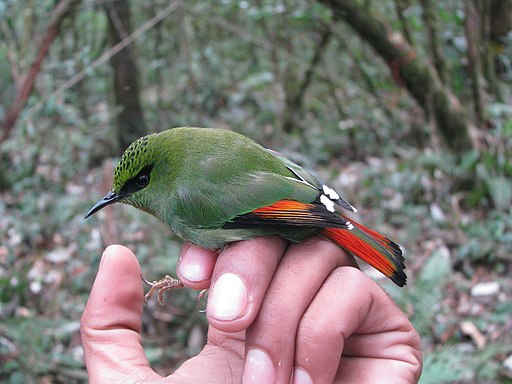Superregnum: Eukaryota
Cladus: Unikonta
Cladus: Opisthokonta
Cladus: Holozoa
Regnum: Animalia
Subregnum: Eumetazoa
Cladus: Bilateria
Cladus: Nephrozoa
Superphylum: Deuterostomia
Phylum: Chordata
Subphylum: Vertebrata
Infraphylum: Gnathostomata
Megaclassis: Osteichthyes
Cladus: Sarcopterygii
Cladus: Rhipidistia
Cladus: Tetrapodomorpha
Cladus: Eotetrapodiformes
Cladus: Elpistostegalia
Superclassis: Tetrapoda
Cladus: Reptiliomorpha
Cladus: Amniota
Classis: Reptilia
Cladus: Eureptilia
Cladus: Romeriida
Subclassis: Diapsida
Cladus: Sauria
Infraclassis: Archosauromorpha
Cladus: Crurotarsi
Divisio: Archosauria
Cladus: Avemetatarsalia
Cladus: Ornithodira
Subtaxon: Dinosauromorpha
Cladus: Dinosauriformes
Cladus: Dracohors
Cladus: Dinosauria
Ordo: Saurischia
Cladus: Eusaurischia
Subordo: Theropoda
Cladus: Neotheropoda
Cladus: Averostra
Cladus: Tetanurae
Cladus: Avetheropoda
Cladus: Coelurosauria
Cladus: Tyrannoraptora
Cladus: Maniraptoromorpha
Cladus: Maniraptoriformes
Cladus: Maniraptora
Cladus: Pennaraptora
Cladus: Paraves
Cladus: Eumaniraptora
Cladus: Avialae
Infraclassis: Aves
Cladus: Euavialae
Cladus: Avebrevicauda
Cladus: Pygostylia
Cladus: Ornithothoraces
Cladus: Ornithuromorpha
Cladus: Carinatae
Parvclassis: Neornithes
Cohors: Neognathae
Cladus: Neoaves
Cladus: Telluraves
Cladus: Australaves
Ordo: Passeriformes
Subordo: Passeri
Infraordo: Passerida
Superfamilia: Sylvioidea
Familia: Paradoxornithidae
Genus: Myzornis
Species: Myzornis pyrrhoura
Name
Myzornis pyrrhoura Blyth, 1843
References
The Journal of the Asiatic Society of Bengal 12: 984
Vernacular names
English: Fire-tailed Myzornis
中文: 火尾绿鹛
The fire-tailed myzornis (Myzornis pyrrhoura) is a bird species. Its genus Myzornis is monotypic, and has recently been placed in the family Paradoxornithidae.[2]
Description
The fire-tailed myzornis is a small species of warbler, 11 to 13 cm (4.3–5.1 in) long and weighing 10–13 g (0.35–0.46 oz). It has bright green plumage with a black mask around the eyes and black scalloping on the crown. The wing is black and white with a streak of bright red and the sides of the tail are red too. The bill is long, slightly curved and black.[3]
Distribution and habitat
The species is found in Bhutan, China, India, Myanmar, and Nepal. Its natural habitat is subtropical or tropical moist montane forests. It is a common species in the upper ridges of the Sikkim and Arunachal Himalayas; mostly between 9,000 ft and 13,000 ft according to climatic conditions and seasonal variation. It prefers bamboo thickets, Rhododendron shrubs, birches, and junipers.[1] There is some seasonal movement, the bird descending to lower altitudes in autumn.[3]
Ecology
The fire-tailed myzornis feeds on insects, spiders and small arthropods, as well as consuming fruit, nectar and sap from trees. In India and Nepal the breeding season is April to June, but the season may be longer in Bhutan, as juveniles have been observed in mid-September.[3]
References
BirdLife International (2018). "Myzornis pyrrhoura". IUCN Red List of Threatened Species. 2018: e.T22716760A132113018. doi:10.2305/IUCN.UK.2018-2.RLTS.T22716760A132113018.en. Retrieved 25 September 2021.
Gelang, Magnus; Alice Cibois; Eric Pasquet; Urban Olsson; Per Alström; Per G. P. Ericson (2009). "Phylogeny of babblers (Aves, Passeriformes): major lineages, family limits and classification". Zoologica Scripta. 38 (3): 225–236. doi:10.1111/j.1463-6409.2008.00374.x. S2CID 21691730.
Collar, N. & Robson, C. (2017). Fire-tailed Myzornis (Myzornis pyrrhoura). In: del Hoyo, J., Elliott, A., Sargatal, J., Christie, D.A. & de Juana, E. (eds.). Handbook of the Birds of the World Alive. Lynx Edicions, Barcelona. (retrieved from http://www.hbw.com/node/59675 on 14 June 2017).
Further reading
Collar, N. J.; Robson, C. (2007). "Family Timaliidae (Babblers)". In del Hoyo, J.; Elliott, A.; Christie, D.A. (eds.). Handbook of the Birds of the World. Vol. 12. Picathartes to Tits and Chickadees. Barcelona: Lynx Edicions.
Retrieved from "http://en.wikipedia.org/"
All text is available under the terms of the GNU Free Documentation License


